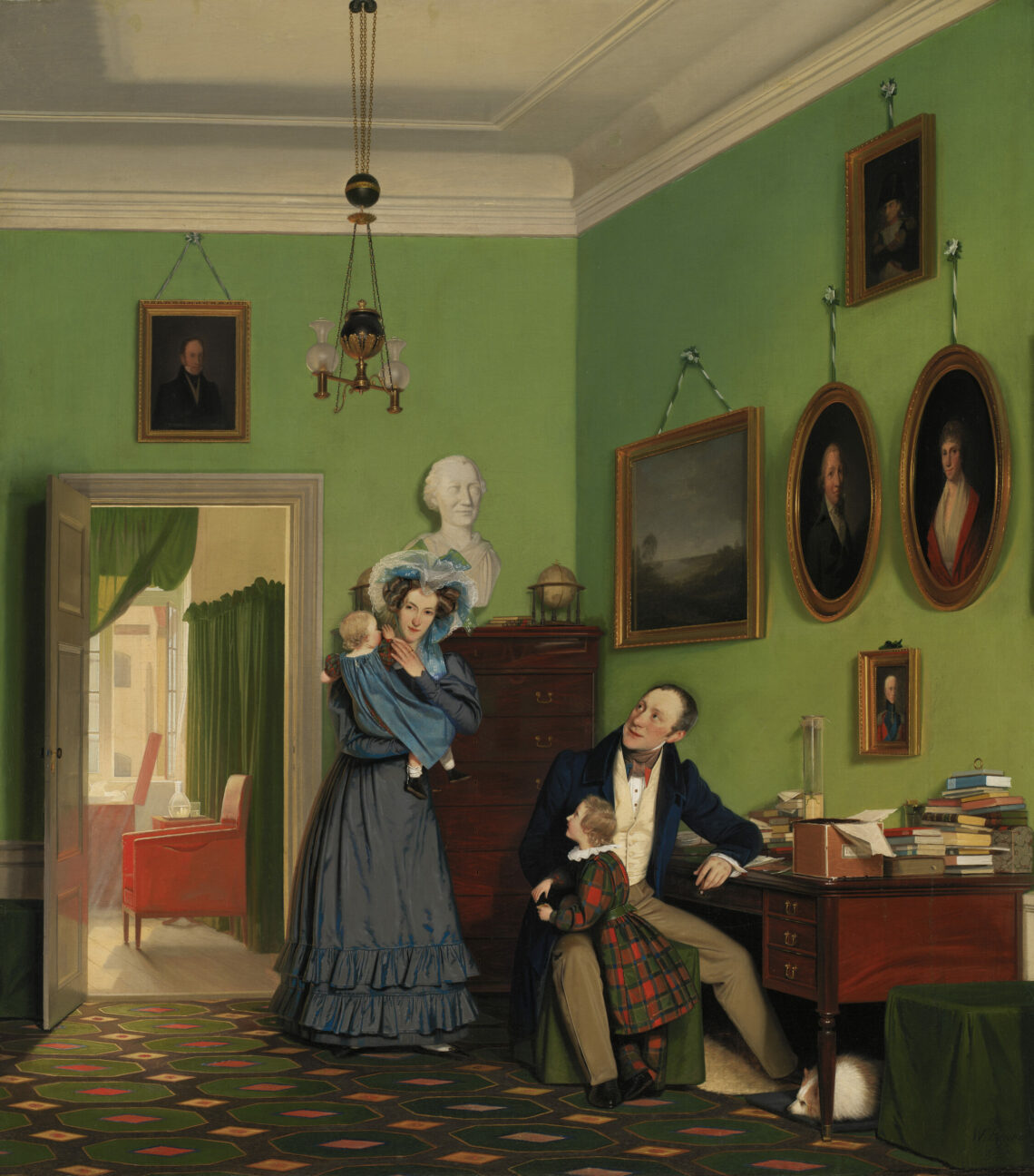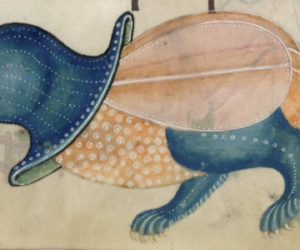
Bad Romance: The Romantic Era in Fashion, Volume One
1 – Greetings, darlings. It's #threadtalk time. And we're visiting the Romantic Era. But be warned: it's a terribly toxic relationship.
This beauty is deceiving. Behind it lurks grand atrocities, oppression, enslavement, murder & more. ⛰👒🖋
And through it all, is fashion.

2 – Few agree on the exact dates of the Romantic Era, but I'm going with 1820-1850 & will be doing this in 2 parts.
Here is my dead boyfriend, poet John Keats, by whom I learned the term Romantic. By 1821, he was dead of TB. "Nothing ever becomes real till it is experienced."
3 – In 1820, fashion was moving away from classic Regency lines.
Trim became 3D, often with folding. You see sumptuous fabrics, impressive details, & new, innovative tailoring techniques
Via the Met, ca. 1820, from America, where there were over 1.5M enslaved Africans…

4 – CW: enslavement.
This is Yarrow Mamout, who was enslaved as a teenager in 1752. His portrait was painted in 1819. He lived until the age of 88, and spent most of his life in Georgetown, but was originally from what is now Senegal & Guinea. He was manumitted in 1796.

5 – 1821. Echoes of the Regency silhouette still survive, but there are deviations. This French gown cutwork details, but the muslin speaks to the connections with the East India Company (more on that later). The gown here is ankle-length, however, and the hem asymmetrical.

6 – Speaking of France. In 1821, Napoleon Bonaparte dies in on the island of Saint Helena.
Some posit arsenic poisoning from Scheele's Green wallpaper was the culprit–the same that went on to kill dressmakers. Maybe not enough to be deadly, but enough to make him sick.

7 – And lo, by 1822, the sleeves start showing up. This silk damask number still has the relatively minimal amount of flounce, but we're starting to see the waist drop. And *flair* is happening, too.
Silk is important because is comes from China. Enter the East India Company.

8 – Remember how we learned that the EIC destroyed the cotton industry in India?
Well, they replaced those crops… with poppies. And began illicit smuggling of opium in 1822 which further impoverished the area & eventually set the stage for the global monopoly & the Opium Wars

9 – 1823. You know I am a sucker for black velvet, and since our next subject is the mother of the Gothic, Mary Wollstonecraft Shelley, this had to be done.
More puffed sleeves, the waist is dropping & that appliqué is lovely. Likely this was a mourning gown. Still would wear.

10 – However, for Mary Wollstonecraft Shelley, 1823 was a very mixed bag (terrible pun: it's true that she carried around Percy Shelley's burned heart in a silk bag) but 1823 was also the year of the 2nd ed of Frankenstein
where she was finally credited as its author publicly.

11 – 1824 and we start to see that backward-looking historical romance! A bit of retro imagination. This fanciful bit is quite a holly-day, isn't it? And with that drop waist, rather princess-like.
Nothing says culture like Christmas… in Hawai'i? Mele Kalikimaka?

12 – In 1824, the monarchy of Hawai'i was a spectacle. So much so that when Kamehameha II (Liholiho) visited England with his family, it was all over the press.
But while Liholiho waited to meet King George IV, he contracted measles & died. Because everything is terrible.
13 – Are we ready for 1825? This is a man's dressing gown made of a patchwork of hundreds of roller print patterns. I think it's probably magical? *I* want to wear it. Closeup because, I mean, come on.
This bit of "working together" definitely didn't convey to our next point…
14 – 1825 was one treaty ratification after another by the US Senate with indigenous tribes.
Ultimately, there were over 360 of them. Broken.
This precipitated the beginning of what would be centuries of continued oppression.
Daniel Bread, Chief of the Oneida, in 1822.

15 – 1826, here comes the circus! Diamond prints and THE sleeves. Here they are! That happened fast. The Empire waist is dead.
What is in those puffs (structures!)? Truthfully, I'm obsessed with the color & the pleating.
Call in the clowns & the elephants! Elephants? Oh no…

16 – CW: animal death
There was a Regency show elephant in England named Chunee. He was stolen from India by the motherf*cking East India Company in 1811.
In 1826, he was tired of being a pet, had an impacted tooth & was old. He killed a handler.
So they killed him. Of course.

17 – 1827. Let's take a breather?
This beautiful dress existed. (cotton, British; morning dress). And also, Romanian inventor Petrache Poenaru patents the fountain pen.
🖋
18 – 1828. Cotton again! Look at that billowy fabric. Just like the Mr. Tilneys of yore, the Romantics favored comfort and movement, & cotton did the trick.
But you needed space to grow cotton, & the EIC was lapping up the land in India with poppy crops for their opium empire.

19 – Back to those treaties, though. In 1828, Andrew Jackson is elected President in the US. 5 tribes, including the Cherokee, are on land he wants to hand over to white folk to farm cotton. He is merciless.
So he gets to work on his Indian Removal plans with gusto. Genocide.

20 – 1829 – Menswear starts to pinch in at the waist, too & you see it reflected in caricatures of the period, along with poofy pants. This ensemble has some lovely brass buttons & I love the color combo.
A more masculine chest was achieved with a bit of extra padding if needed.

21 – And in 1829, we also get the first patent on the precursor to the typewriter: the typographer by Willam Austin Burt, another inventor.
See, it's not a terrible story!
Except that the prototype is destroyed in a fire.

22 – 1830! Now we're getting to the real drama. It's all about the angles and the curves. That collar, that trim. We're back to muslin & the trim is rosebuds and foxgloves (potentially a wedding gown).You can pick any hairstyle to the right to match!
Hair-raising.
23 – 1830 was A LOT. In Europe alone there were five Romantic nationalist revolutions: France, Portugal (& Brazil), Belgium, Italy & Switzerland. A new King of France, of Belgium, reforms in CH.
Women were at the forefront in France, in particular, inspiring art like this.

24 – 1831 brings this moiré masterpiece in green silk. Please feel free to play match-a-hairpiece to get the right feel. The neckline on this is magical, ditto belt.
This might be an American dress, but the silk was likely from somewhere else, potentially in Lyon, and in 1831…

25 – The canut (silk craftsmen) revolts began. As silk markets began tanking, workers wages went with it (if you were a lady weaver, sucks to be you).
Eventually came insurrection, resulting in 600 casualties, & insurgents captured the town briefly.
Speaking of fabric drama.

26 – 1832 does not need you to adjust your screen. This printed cotton has a lot going on, and features gigot sleeves which, as the Met indicates, used whalebone or wool to keep structure. You can see the skirts starting to bell out more now. Taking up more space, very colonial.

27 – CW: genocide, massacre
Eventually opening up Illinois & Wisconsin to settlers, in 1832, American troops indiscriminately massacred 400 starving men, women & children of the Sauk & Fox tribes (who had tried to surrender).
Known as the Bad Axe Massacre.

28 – 1833 brings us lots of lace. I do love a full recreation. This one from @LACMA even gives us some hair to work with, and a handkerchief. That tiny waist, though. We know those undergarments are working overtime now.
Speaking of lace…

29 – In 1833 Charles Babbage finally gets to meet *Ada Lovelace*. For those not in the know, Lord Byron had the honor of having Ada Lovelace as his daughter (he just wasn't involved™). She is the mother of computer science. Also a mathematical genius. (Portrait, 1836)

30 – 1834, and we're almost done for tonight, because in this year slavery is abolished in the British Empire!
… except in all the territories owned by the East India Company, Sri Lanka (known as Ceylon), and Saint Helena (where Napoleon died!).
Here's another pretty dress.

31 – 1835, I present a frock coat and two names:
James Pratt and John Smith.
They were the last two men convicted of buggery (homosexual acts) in the British Empire & hanged outside of Newgate Prison in London that year.
Some guy named Charles Dickens reported on the event.

32 – That concludes Vol I of Bad Romance. Next week, Vol II. Sources –
General Links:
https://fashionhistory.fitnyc.edu/1830-1839/
https://en.wikipedia.org/wiki/1830s_in_Western_fashion
https://www.mimimatthews.com/2015/11/30/the-1830s-in-fashionable-gowns-a-visual-guide-to-the-decade/
https://maggiemayfashions.com/calicoball/fashionhistory/the-romantic-era-1820-1850/
https://lowelldesigns.com/romantic-early-victorian/
http://char.txa.cornell.edu/ART/DRESS/HISTORIC/ROMANTIC/romantic.htm
33 – 1820 – Enslaved Africans
https://www.buffalolib.org/sites/default/files/exhibit/pdf/Vocab%20&%20Key%20Concepts%20-%20mc.pdf
https://en.wikipedia.org/wiki/Missouri_Compromise
http://slaveryimages.org/s/slaveryimages/item/2780
1821 – Napoleon
https://mmta.co.uk/2016/10/14/was-napoleon-killed-by-wallpaper/
https://en.wikipedia.org/wiki/Napoleon
1822 – The Opium Wars in India
https://www.bbc.com/news/world-asia-india-49404024
https://www.whitman.edu/economics/Workingpapers/content/WP_25.pdf
https://www.nam.ac.uk/explore/opium-war-1839-1842
34 – 1823 – Mary Shelley
https://www.hsm.ox.ac.uk/files/frankenstein-timeline-resourcepdf
https://en.wikipedia.org/wiki/Mary_Shelley
1824 – King Kamehameha II
http://www.ulukau.org/elib/cgi-bin/library?e=d-0ks8-000Sec–11en-50-20-frameset-book–1-010escapewin&a=d&d=D0.23&toc=0
https://www.si.edu/object/king-kamehameha-ii%3Anpg_NPG.80.312
https://evols.library.manoa.hawaii.edu/bitstream/handle/10524/261/HJH42_69-104.pdf?sequence=1
1825 – US ratifies peace treaties with tribes
– https://lesley.edu/news/broken-promises-mohegan-chief-calls-for-us-to-uphold-treaties-with-native-people
35 – 1826 – Chunee the Elephant
https://en.wikipedia.org/wiki/Chunee
1827 – Petrache Poenaru patents the fountain pen.
https://en.wikipedia.org/wiki/Petrache_Poenaru
1828 – Andrew Jackson
https://en.wikipedia.org/wiki/Andrew_Jackson
https://www.thoughtco.com/the-trail-of-tears-1773597
http://projects.leadr.msu.edu/uniontodisunion/exhibits/show/andrew-jackson-and-the-trail-o/indian-removal-begins
https://en.wikipedia.org/wiki/Indian_removal
36 – 1829 – Typographer
https://en.wikipedia.org/wiki/Typographer_(typewriter)
https://en.wikipedia.org/wiki/William_Austin_Burt
1830 – Romantic nationalist revolutions!
https://en.wikipedia.org/wiki/Revolutions_of_1830#/media/File:Eug%C3%A8ne_Delacroix_-_La_libert%C3%A9_guidant_le_peuple.jpg
https://en.wikipedia.org/wiki/Revolutions_of_1830
http://blogs.bu.edu/guidedhistory/historians-craft/isis-evans/
https://www.ohio.edu/chastain/dh/frenchwo.htm
1831 – The Canut revolts
37 – 1832 – The Bad Axe Massacre
https://www.wisconsinhistory.org/Records/Article/CS1604
https://ss.sites.mtu.edu/mhugl/2015/10/11/battle-of-bad-axe-the-bad-axe-massacre/
https://www.si.edu/es/object/yt_ogDD9rlhQDQ
1833 – Ada Lovelace
https://collections.lacma.org/node/232593
https://en.wikipedia.org/wiki/Ada_Lovelace
https://www.newyorker.com/tech/annals-of-technology/ada-lovelace-the-first-tech-visionary
https://www.sdsc.edu/ScienceWomen/lovelace.html
38 – 1834 – Slavery Abolition Act
https://www.britannica.com/topic/Slavery-Abolition-Act
https://en.wikipedia.org/wiki/Slavery_Abolition_Act_1833
1835 – Pratt & Smith
https://en.wikipedia.org/wiki/James_
https://curiosity.lib.harvard.edu/crime-broadsides/catalog/46-990031858580203941Pratt_and_John_Smith
https://www.bl.uk/collection-items/the-execution-of-james-pratt-and-john-smith
39 – That concludes tonight's #threadtalk. Beauty isn't always pretty, but it is true. I don't think that's what Keats meant when he said:
"Beauty is truth, truth beauty,—that is all
Ye know on earth, and all ye need to know."
But, well, the truth is out there.

Originally tweeted by Natania Barron (@NataniaBarron) on September 20, 2021.















